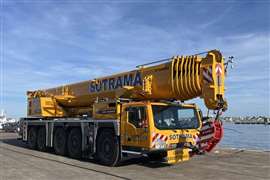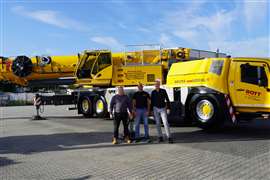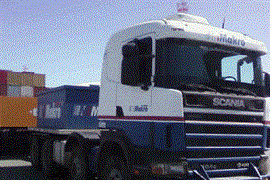Keep America moving
18 April 2008
SC&RA was pleased when President Bush signed the Safe, Accountable, Flexible, Efficient Transportation Equity Act: A Legacy for Users (SAFETEA-LU) on August 10. This bill, which provides a record $286.5 billion over six years for our nation's highways and public transportation, came 22 months after the expiration of the previous long-term bill. A dozen extensions of the old bill kept transportation funding from grinding to a halt in the interim.
As a member of Americans for Transportation Mobility (ATM), a business-labor coalition, SC&RA had strongly supported efforts to promote the importance of this legislation. At the same time, we remained aware that even more funding was needed.
That shortfall came into focus on November 3, when the National Chamber Foundation released the second phase of a study researched by Cambridge Systematics, Future Highway and Public Transportation Financing. This study was initiated in response to the gridlock, the decaying roads and bridges, and the inadequate transportation infrastructure that cost the US economy billions of dollars in productivity.
Maintaining existing infrastructure means that pavement and bridge conditions and travel levels of service will remain the same. Below this level, conditions will deteriorate and congestion will grow.
To maintain our transportation system, all levels of government must invest $235 billion in 2006, $304 billion in 2015, and $472 billion in 2030. Current revenue streams will fall far short of these levels - the cumulative shortfall through 2015 is $0.5 trillion. To improve our transportation system to a level that benefits the nations' economic productivity requires an additional investment of tens of billions of dollars annually.
The major reason for the shortfall in federal revenues is that federal motor fuel tax rates are not indexed to inflation and have lost one third of their purchasing power since the last adjustment in 1993, according to the study. SAFETEA-LU failed to address this problem.
Of the approximately 60 cents per mile that drivers now pay to operate a car, only one cent goes as federal fuel taxes into the Highway Trust Fund (HTF). Paying an additional half cent per mile into the HTF would fully fund the federal share of needs to maintain the nation's highway and transit systems.
Some ATM members call for an even bigger boost to the fuel tax, plus indexing. For example, the American Association of State Highway and Transportation Officials supports a nickel-per-gallon increase, and the American Road and Transportation Builders wants a two cent increase.
Complicating the issue is the growing popularity of hybrid and other alternative fuel vehicles. The study recommends broadening the base of user payments to the HTF by collecting a vehicle fee to capture fair payments from such vehicles.
Another strategy mentioned in the study was giving states and local government more revenue and investment options by authorizing expanded use of tolling. Conversations with our members lead us to believe that they generally support an equitable gas tax as opposed to higher tolls. One fundamental fact that we should all keep in mind is that SC&RA's membership benefits greatly from highway and bridge spending.
Members in our Crane & Rigging and Transportation Groups gain immediately when they are called on to do the heavy lifting and hauling inherent in major infrastructure projects. Of course, the Allied Industries Group members also come out ahead because they supply the heavy equipment and ancillary products and services necessary to complete the work.
In the long run, our members who operate trucks and mobile cranes stand to gain substantially if they can move over an expanded network of well-maintained highways and bridges. We cannot afford congested roadways pocked with potholes and other obstacles that hinder timely delivery and damage expensive equipment.
Rest assured that SC&RA will continue to support its members needs and keep them informed of significant developments concerning US infrastructure.
STAY CONNECTED


Receive the information you need when you need it through our world-leading magazines, newsletters and daily briefings.
CONNECT WITH THE TEAM











